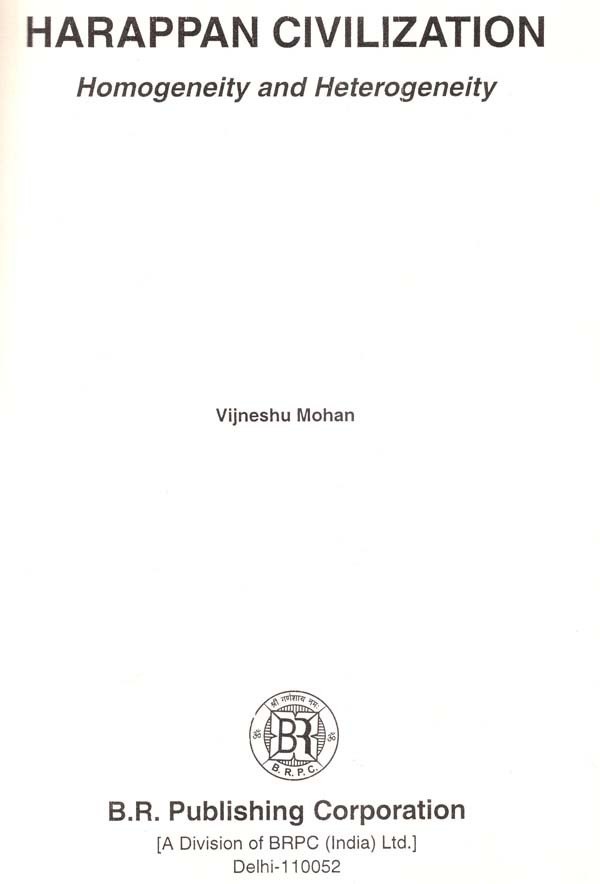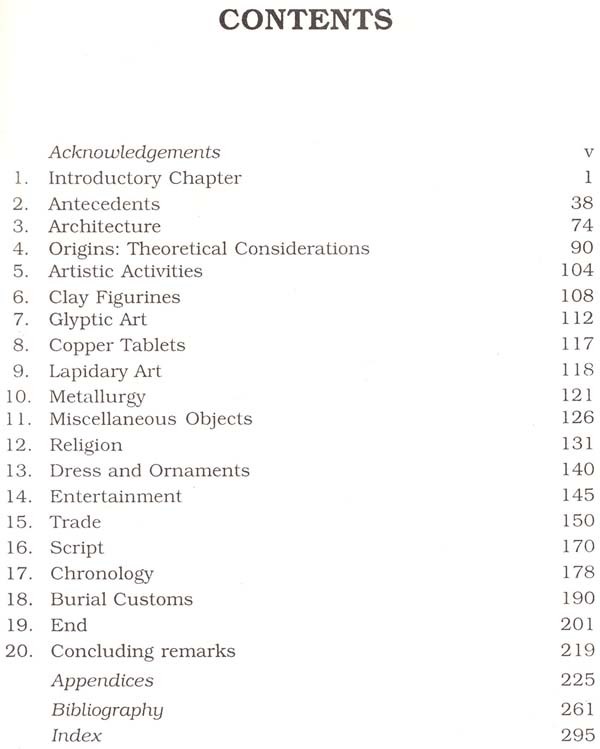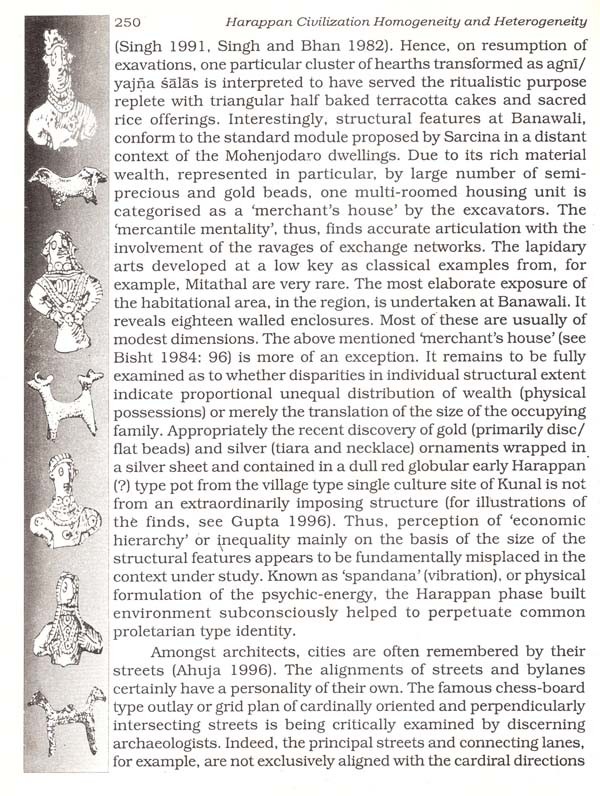
Harappan Civilization- Homogeneity and Heterogeneity
Book Specification
| Item Code: | AZE487 |
| Author: | Vijneshu Mohan |
| Publisher: | B.R. PUBLISHING CORPORATION |
| Language: | ENGLISH |
| Edition: | 2005 |
| ISBN: | 9788176464758 |
| Pages: | 324 |
| Cover: | HARDCOVER |
| Other Details | 10.50x6.50 |
| Weight | 800 gm |
Book Description
The volume critically evaluates or enumerates the homogeneity thesis; and elaborates upon the heterogeneity enshrined in differential growth of the Hardpan civilization. Dynamic forces of convergence and multiplication intertwined to produce the unique cultural ethos, with regional variations. The cohesiveness was, in the main, provided by closely interacting (communicating) diverse settlement matrices. The civilization also prospered in harsher (semi-arid) conditions; and the concerted agricultural innovations ensured steady supply of, even, surplus grains. The 'arrested' Harappan urbanization, laced with continued strong rural flavor, acted both as cause and effect when viewed as coordinated processes.
He has several research publications in reputed Journals, and presentations in international/national Conferences and Seminars. He taught Archaeology at the Punjab University, Chandigarh.
He is fortunate to have authored three well-received, thought provoking books, viz., (1) Archaeology Status, Growth and Development (1998), (2) Philosophical Archaeology and (3) Folkloristics of Mahabharata (2003).
Truly, the Harappan civilization, especially, its 'organic' reflective' growth, largely mirrors the development of archaeology in the Subcontinent. The civilization, therefore, provides ample food for locating developmental stages, laced with periodic 'paradigmatic shifts'. revolving around every progressive discussion, description and research. The cumulative aspects of datasets are overwhelmingly rich. The problem oriented studies are increasingly forthcoming to rule the fresh analyses.
**Contents and Sample Pages**













